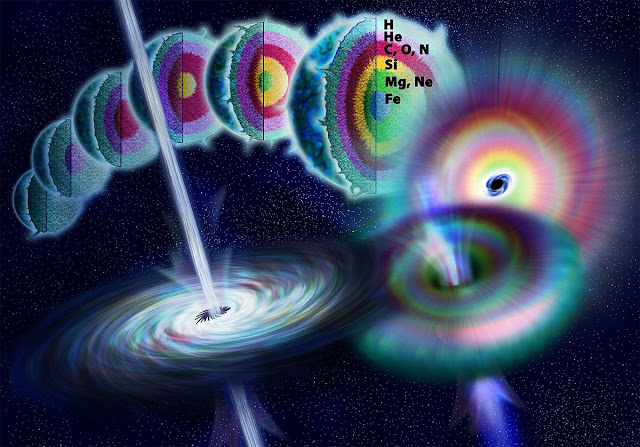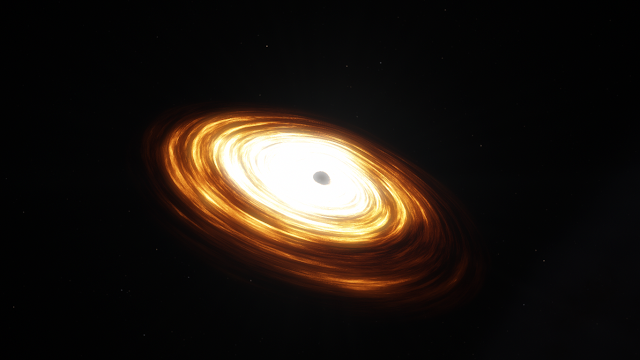Welcome to the Series of Dazzling thing in the Universe:- (Part -2)
R136a1 is the most massive star ever found and it's also the brightest.
Remember that lower absolute magnitude are brighter.
R136a1 isn't 4.8, like our Sun, it is -12.6, which means it is 8.7 million times brighter than our Sun.
But R136a1 isn't the brightest thing out there.
When a giant star dies, it explodes violently in what is known as a Supernova.
As I mentioned in my previous series "Hottest thing in the Universe".
Supernovas eject terrifying flashes of radiation known as Gamma-ray bursts.
Arguably, the brightest electromagnetic events in the Universe.
A typical Gamma-ray burst releases as mush energy in a few seconds as our Sun will release altogether in its entire 10 billion years lifetime.
If WR104 a Gamma-ray burst future candidate directly struck Earth with such a beam for 10 seconds astronomers predict it could deplete 25%of our ozone layer and lead to mass extinction and starvation.
The largest thermonuclear bomb ever detonated didn't do anything close to that and it was exploded right here in our atmosphere.
Where WR104 is 8,000 light years away. You can't even see it with your naked eyes or pair of binoculars.
But Gamma-ray bursts are merely brief events lasting only a few minutes at most, sometimes, just a matter of milliseconds. If you want the brightest sustained thing, you'll paradoxically have to look at the darkest thing.
Black holes (do check out my another series" Journey to the Black Hole") to be fair, dark matter is ostensibly darker.
But because dark matter has been hypothesised to not even interact with light, with electromagnetism at all, calling dark matter "not bright" is kind of like calling your Pancake "a not fast aeroplane".
It's not really even in the same category Black Holes, however do interact with light, reflecting so little, well they don't let any escape, at least not in a form resembling the way it came in.
That's dark. But the intense energies created by Black Holes in the process of eating things like Stars is anything but dark.
Gas and debris from the stars they eat swirl into Arcpluvian Cosmic gallows known as Accretion Discs.
R136a1 is the most massive star ever found and it's also the brightest.
Remember that lower absolute magnitude are brighter.
R136a1 isn't 4.8, like our Sun, it is -12.6, which means it is 8.7 million times brighter than our Sun.
But R136a1 isn't the brightest thing out there.
When a giant star dies, it explodes violently in what is known as a Supernova.
 |
| Supernova |
Supernovas eject terrifying flashes of radiation known as Gamma-ray bursts.
A typical Gamma-ray burst releases as mush energy in a few seconds as our Sun will release altogether in its entire 10 billion years lifetime.
 |
| Gamma Ray Burst |
The largest thermonuclear bomb ever detonated didn't do anything close to that and it was exploded right here in our atmosphere.
Where WR104 is 8,000 light years away. You can't even see it with your naked eyes or pair of binoculars.
But Gamma-ray bursts are merely brief events lasting only a few minutes at most, sometimes, just a matter of milliseconds. If you want the brightest sustained thing, you'll paradoxically have to look at the darkest thing.
Black holes (do check out my another series" Journey to the Black Hole") to be fair, dark matter is ostensibly darker.
But because dark matter has been hypothesised to not even interact with light, with electromagnetism at all, calling dark matter "not bright" is kind of like calling your Pancake "a not fast aeroplane".
It's not really even in the same category Black Holes, however do interact with light, reflecting so little, well they don't let any escape, at least not in a form resembling the way it came in.
That's dark. But the intense energies created by Black Holes in the process of eating things like Stars is anything but dark.
Gas and debris from the stars they eat swirl into Arcpluvian Cosmic gallows known as Accretion Discs.
 |
| Accretion Discs |